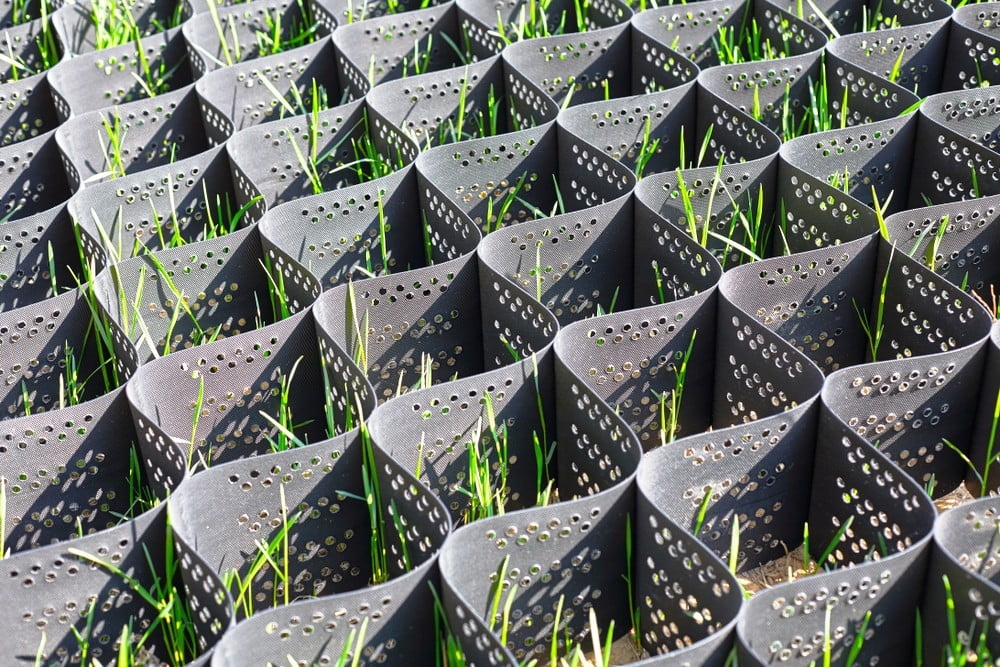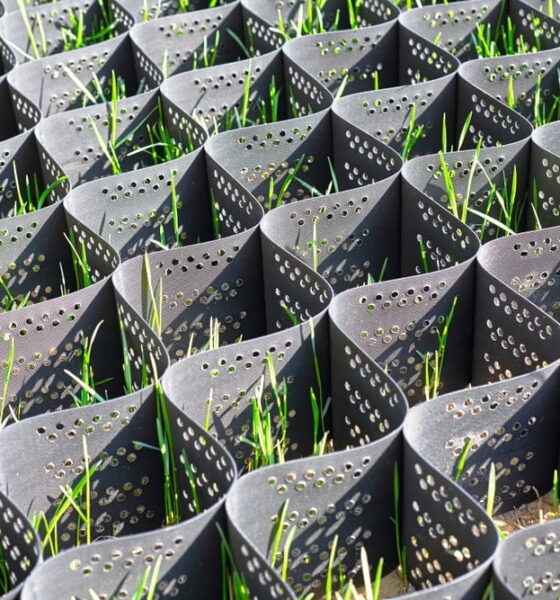

Editors Choice
The Use of Geosynthetic Materials in Preserving the Environment
Not all plastic is bad. With eight million metric tons of plastic entering the oceans each year, this once-coveted material has received a bad rap as a worldwide pollutant – unsurprising as these particles circulate through the waters and kill off ocean life and destroy ecosystems. However, there are some good plastics. Companies like Plastic Fusion are leveraging innovative geosynthetic materials to protect the environment by preventing erosion, contamination, and land destruction.
Geosynthetic materials are leading the way in environmental preservation by preventing erosion, contamination and destruction of the land. The “geo” part simply means working with the land. Synthetic materials such as PVC and polyethylene in large-scale sheets can be used to control liquids and solids to keep the right things in the right place, and the wrong things away.
These materials in sheet form are being used as agricultural waste-lagoon liners, oilfield drilling reserve pit liners, storm-water runoff management and pollution control, irrigation management, and for conservation of water resources. They are important also in highway construction. These are all solutions designed to prevent contamination, destruction or erosion of the land surface and sub-surface, and to contain or manage the flow of liquids.
Since geosynthetic materials replace extensive earthworks and concrete structures, they offer much more affordable and time-sensitive solutions than their alternatives. And they can be fitted to the contours of the land rather than having to move earth to accommodate rigid structures.
Geomembranes
Geomembranes are non-porous sheets that create a barrier in the ground to prevent seepage. We find these used as substrates – “underlayments” – beneath sports fields and other watered or flood-susceptible surfaces. They’re used as liners for pits and canals. And they’ve become invaluable as top covers for landfills, which are required by law to be covered at night. The operator used to spread soil over the top, building up unnecessary and scarce layers.
Simply a thin sheet of specialized plastic, geomembranes boast a super low permeability that keeps fluid migration to the bare minimum. Due to this property, these membranes are heavily used in the farming industry to line irrigation canals and ditches. Agricultural irrigation has long been one of the least efficient water uses, and a great waster of water.
In fact, water conservation is perhaps the greatest usage of these plastic materials. “A geomembrane is an excellent complement with concrete, or a complete substitute for it,” says Shane Carter of Western Environmental Liner, adding “and of course it’s much less expensive – which means you can create larger facilities for less cost.” Carter’s company has its origins in agriculture, and currently is one of the world’s largest providers of geomembranes and geotextiles for agriculture and other industries.
Landfill operators also tend to use these liners to cap off the landfill and keep it from releasing harmful gases in the air. The non-permeable materials keep garbage from blowing away in the wind and negatively impacting the environment. Since the materials offer supreme durability over the alternatives, they are known to stand up to high stress situations without degrading.
Tank and pit liners perform most crucially at keeping contaminants separated from groundwater. The oil exploration industry uses such sheeting extensively to keep the volatile chemicals of its drilling fluids contained for subsequent disposal, and away from the natural environment.
Geotextiles
Geotextiles are designed on the other hand to be porous to some degree or another. These are woven materials, made from similar polymers but constructed by needle punching or threading. These are in use as filtration systems, to trap solids and allow liquids to pass. Many surfaces that require ground water to be both conserved and also moved along – as in the case of irrigation meeting sudden storm overflows – will often have an impermeable, geomembrane substrate, with geotextiles on or closer to the surface.
Essentially an ultra-tough fabric made from plastic materials, geotextiles provide an eco-friendly way to protect, separate and drain the soil. They also reinforce the soil to help prevent erosion from affecting the constructed works or area as a whole. As a result of their eco-friendly design, versatility and ease of installation, geotextiles play a major role in the creation of roadways, airfields, reservoirs and canals. When used as an alternative to soil nailing on steep slopes, and similar projects, these materials reduce costs while increasing erosion protection by allowing planting.
Changing Industry
The geosynthetic materials on the market today meet the needs of professionals across many vital industries. They are purpose-built for performance without impacting the environment in a negative way. Their exceptional qualities of flexibility and ease of custom-fitting bring added value to older options such as earthworks and concrete – which they work in tandem with and complement, more often than not.
Despite being specialty-made, the geosynthetic materials come in at a much lower price point than moving dirt and building complex concrete and metal structures. They are also much faster to deploy and resist degradation exceedingly better than soil – or even concrete, which is subject to cracking from shifts in the land over time.
Geosynthetic materials can be tailored to the situation’s needs in terms of shape, size and composition. While more durable infrastructure still degrades over time, geosynthetic materials can be deployed and removed or replaced over time. They are one plastic that pays its way in helping to preserve the environment in the face of human and natural impacts. They help prevent contamination, erosion and other damaging processes that threaten the environment, and they very much help conserve water, too.


 Environment10 months ago
Environment10 months agoAre Polymer Banknotes: an Eco-Friendly Trend or a Groundswell?

 Environment11 months ago
Environment11 months agoEco-Friendly Home Improvements: Top 7 Upgrades for 2025

 Features9 months ago
Features9 months agoEco-Friendly Cryptocurrencies: Sustainable Investment Choices

 Features10 months ago
Features10 months agoEco-Friendly Crypto Traders Must Find the Right Exchange


















